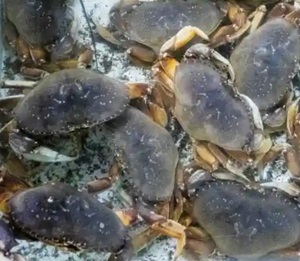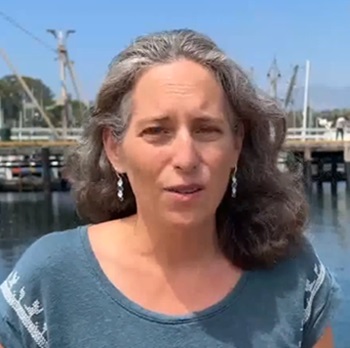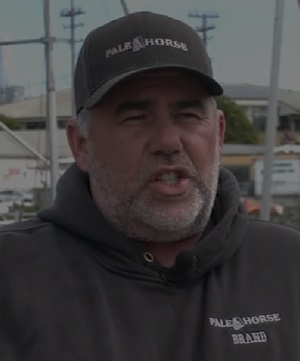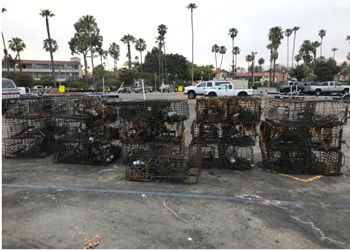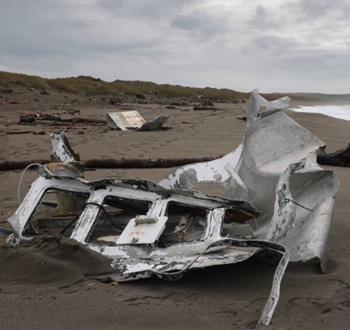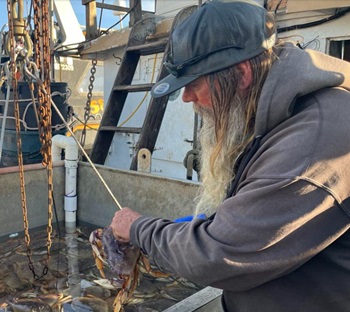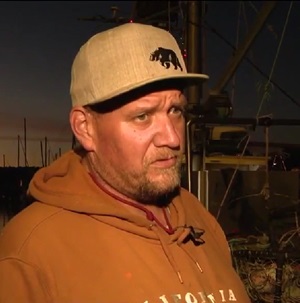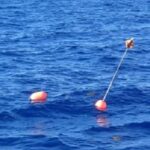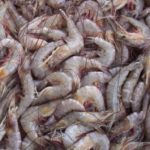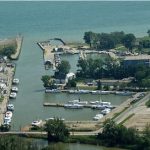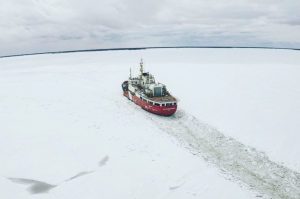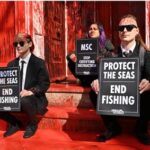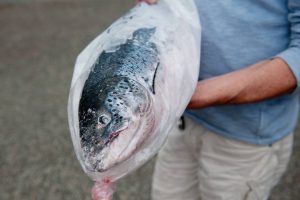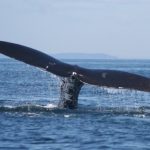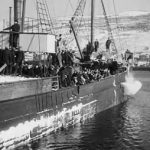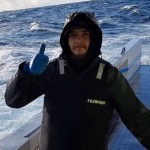Tag Archives: California Department of Fish and Wildlife
Commercial fishermen express frustration with late open to Dungeness crab season
 Last week, commercial Dungeness crab fishery began in Humboldt County. On Wednesday, Jan.15, after a 10-day delay, the season opened throughout the California Department of Fish and Wildlife’s (CDFW) Northern Management Area, a region spanning from the coast of Sonoma County to the Oregon border. Many commercial fishermen in Humboldt County expressed frustration with the wait — and with these types of delays becoming a perennial problem. They say frequent delays to the opening of a crabbing season that once relied on December holiday sales have left fishermen feeling squeezed. “The biggest downhill path for our fishery began five years ago when the state of California, in their lack of defense of the most lucrative fishery on the California coast, settled a lawsuit with the Center for Biological Diversity,” Rotwein said. “We’re on a trajectory to … being regulated out of business. Economically, I don’t know if the fleet can survive … Every single year since then has been something — a season delay, season closure.” more, >>CLICK TO READ<< 09:15
Last week, commercial Dungeness crab fishery began in Humboldt County. On Wednesday, Jan.15, after a 10-day delay, the season opened throughout the California Department of Fish and Wildlife’s (CDFW) Northern Management Area, a region spanning from the coast of Sonoma County to the Oregon border. Many commercial fishermen in Humboldt County expressed frustration with the wait — and with these types of delays becoming a perennial problem. They say frequent delays to the opening of a crabbing season that once relied on December holiday sales have left fishermen feeling squeezed. “The biggest downhill path for our fishery began five years ago when the state of California, in their lack of defense of the most lucrative fishery on the California coast, settled a lawsuit with the Center for Biological Diversity,” Rotwein said. “We’re on a trajectory to … being regulated out of business. Economically, I don’t know if the fleet can survive … Every single year since then has been something — a season delay, season closure.” more, >>CLICK TO READ<< 09:15
California Dungeness crab opening date announced
 The California Department of Fish and Wildlife announced Friday it will open the commercial Dungeness crab fishery from the Sonoma/Mendocino County line to the U.S./Mexico border starting on Jan. 5. A pre-soak when crab pots can be baited in the water will begin at 8:01 a.m. Jan. 2 before the fishery opens at 12:01 a.m. on Jan. 5. This area (Fishing Zones 3, 4, 5 and 6) will be subject to a 50 percent trap reduction. The trap reduction is expected to reduce entanglement risk for humpback whales by decreasing the amount of gear and vertical lines in the water. The Dungeness crab season in the Northern Management Area (Zones 1 and 2, California/Oregon Border to the Sonoma/Mendocino County line) will be further delayed due to the inability to conduct industry-sponsored meat quality testing. more, >>CLICK TO READ<< 06:33
The California Department of Fish and Wildlife announced Friday it will open the commercial Dungeness crab fishery from the Sonoma/Mendocino County line to the U.S./Mexico border starting on Jan. 5. A pre-soak when crab pots can be baited in the water will begin at 8:01 a.m. Jan. 2 before the fishery opens at 12:01 a.m. on Jan. 5. This area (Fishing Zones 3, 4, 5 and 6) will be subject to a 50 percent trap reduction. The trap reduction is expected to reduce entanglement risk for humpback whales by decreasing the amount of gear and vertical lines in the water. The Dungeness crab season in the Northern Management Area (Zones 1 and 2, California/Oregon Border to the Sonoma/Mendocino County line) will be further delayed due to the inability to conduct industry-sponsored meat quality testing. more, >>CLICK TO READ<< 06:33
Tension grows among Bay Area crab fishermen to find whale-safe alternative crabbing methods
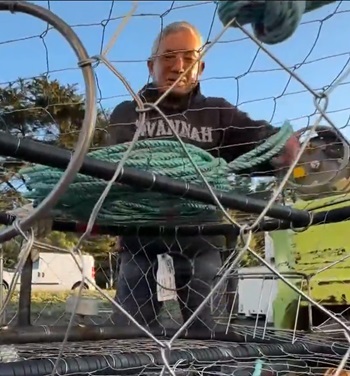 State regulators say the prevalence of marine life including humpback whales is too high for crab fishing to begin. Now there’s a growing tension among crab fishermen about alternative methods of whale-safe fishing to offset the losses of increasingly shortened seasons. Dick Ogg is a crab fisherman who also spends countless hours driving up and down the coast, advocating for others in the business without getting paid. Fishing is in the 72-year-old’s veins. Between calls with regulators and industry decision makers, Ogg prepares his own crab pots, employing just two deckhands who work in the side-yard of his home to save costs. But the Bodega Bay resident is concerned about a years-long push to promote high-tech “pop-up” fishing gear as the solution for whale-safe harvesting in the spring after the season ends. Video, more, >>CLICK TO READ<< 09:26
State regulators say the prevalence of marine life including humpback whales is too high for crab fishing to begin. Now there’s a growing tension among crab fishermen about alternative methods of whale-safe fishing to offset the losses of increasingly shortened seasons. Dick Ogg is a crab fisherman who also spends countless hours driving up and down the coast, advocating for others in the business without getting paid. Fishing is in the 72-year-old’s veins. Between calls with regulators and industry decision makers, Ogg prepares his own crab pots, employing just two deckhands who work in the side-yard of his home to save costs. But the Bodega Bay resident is concerned about a years-long push to promote high-tech “pop-up” fishing gear as the solution for whale-safe harvesting in the spring after the season ends. Video, more, >>CLICK TO READ<< 09:26
‘This is our primary income’: Dungeness crab season delayed again
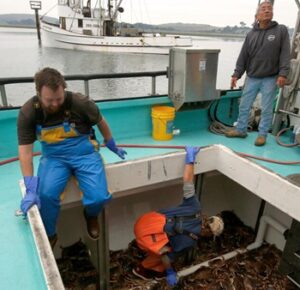 In the latest blow to North Bay commercial fishing, the start of the California Dungeness crab season has once again been delayed. This time, until the new year, the California Department of Fish and Wildlife has announced. The postponement, which marks the seventh year in a row for such delays, is in response to continued concerns about humpback whale migration patterns and the protection of endangered marine life from being entangled in fishing gear. The previous year’s season opener was delayed until Jan. 18 — months after the most lucrative time for the season, said Dick Ogg, president of the Bodega Bay Fisherman’s Marketing Association. “This is our primary income,” Ogg said. “It would be like if somebody told you they won’t let you work for the next month and a half.” more, >>CLICK TO READ<< 16:51
In the latest blow to North Bay commercial fishing, the start of the California Dungeness crab season has once again been delayed. This time, until the new year, the California Department of Fish and Wildlife has announced. The postponement, which marks the seventh year in a row for such delays, is in response to continued concerns about humpback whale migration patterns and the protection of endangered marine life from being entangled in fishing gear. The previous year’s season opener was delayed until Jan. 18 — months after the most lucrative time for the season, said Dick Ogg, president of the Bodega Bay Fisherman’s Marketing Association. “This is our primary income,” Ogg said. “It would be like if somebody told you they won’t let you work for the next month and a half.” more, >>CLICK TO READ<< 16:51
California’s Dungeness Crab Season Delayed Again, But Could Open in Time for Holidays
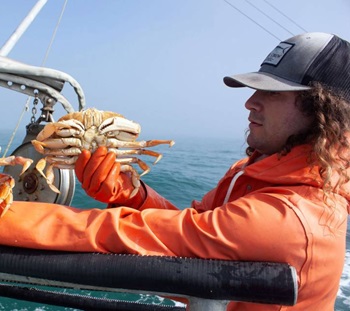 California Department of Fish and Wildlife officials have delayed the commercial Dungeness crab season statewide for the second time this year and extended a ban on recreational use of certain traps. There’s still a chance the commercial season for Bay Area crabbers could open earlier than the past few years, though, just in time for holiday dinners. Officials said they plan to reevaluate the region’s waters, which had been scheduled to open on Dec. 1, early next month. The restrictions are due to increased whale populations and their entanglement in crabbing gear. If the whales have finished passing through on their way south to winter breeding grounds, the Department of Fish and Wildlife said it could open the commercial season — and lift the recreational restrictions — statewide on Dec. 15. more, >>CLICK TO READ<< 07:08
California Department of Fish and Wildlife officials have delayed the commercial Dungeness crab season statewide for the second time this year and extended a ban on recreational use of certain traps. There’s still a chance the commercial season for Bay Area crabbers could open earlier than the past few years, though, just in time for holiday dinners. Officials said they plan to reevaluate the region’s waters, which had been scheduled to open on Dec. 1, early next month. The restrictions are due to increased whale populations and their entanglement in crabbing gear. If the whales have finished passing through on their way south to winter breeding grounds, the Department of Fish and Wildlife said it could open the commercial season — and lift the recreational restrictions — statewide on Dec. 15. more, >>CLICK TO READ<< 07:08
An update on the start of Dungeness crab season is coming next week
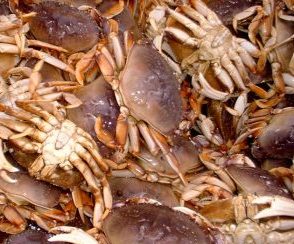 At the end of next week, the California Department of Fish and Wildlife (CDFW) will determine whether or not to open the commercial Dungeness crab season on Dec. 1 or postpone it for a second time until at least Dec. 22. In late October, an initial assessment by the California Department of Fish and Wildlife pushed back the first day of commercial Dungeness crab season from its traditional mid-November opening to Dec. 1, pending another assessment, due to an abundance of humpback whales off the coast of California. On Friday, the CDFW announced that director Charlton Bonham will conduct a second assessment on the risk of marine entanglement on or around Nov. 21. more, >>CLICK TO READ<< 06:59
At the end of next week, the California Department of Fish and Wildlife (CDFW) will determine whether or not to open the commercial Dungeness crab season on Dec. 1 or postpone it for a second time until at least Dec. 22. In late October, an initial assessment by the California Department of Fish and Wildlife pushed back the first day of commercial Dungeness crab season from its traditional mid-November opening to Dec. 1, pending another assessment, due to an abundance of humpback whales off the coast of California. On Friday, the CDFW announced that director Charlton Bonham will conduct a second assessment on the risk of marine entanglement on or around Nov. 21. more, >>CLICK TO READ<< 06:59
California delays commercial Dungeness crab season
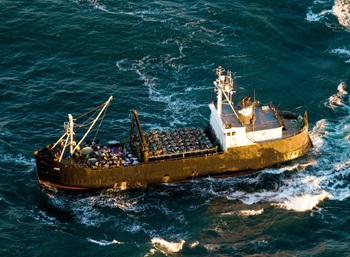 The California Department of Fish and Wildlife on Friday cited a large number of humpback whales and recent entanglements as the reason for the postponing the state’s commercial Dungeness crab season. The affected area ranges from the Sonoma-Mendocino county line in Northern California to the U.S.-Mexico border. Originally set to open Nov. 15, a new start date is tentatively scheduled for Dec. 1. However, that’s dependent on a November risk assessment and the fish and wildlife director’s determination of risk for Dungeness crab fisheries. The northernmost fishing zones, from the Oregon-California border to the Sonoma-Mendocino county line, can’t open until Dec. 1 and weren’t included in Friday’s decision. more, >>CLICK TO READ<< 06:43
The California Department of Fish and Wildlife on Friday cited a large number of humpback whales and recent entanglements as the reason for the postponing the state’s commercial Dungeness crab season. The affected area ranges from the Sonoma-Mendocino county line in Northern California to the U.S.-Mexico border. Originally set to open Nov. 15, a new start date is tentatively scheduled for Dec. 1. However, that’s dependent on a November risk assessment and the fish and wildlife director’s determination of risk for Dungeness crab fisheries. The northernmost fishing zones, from the Oregon-California border to the Sonoma-Mendocino county line, can’t open until Dec. 1 and weren’t included in Friday’s decision. more, >>CLICK TO READ<< 06:43
Show Me the Benefits: 10 Years in, What Have Marine Protected Areas Accomplished?
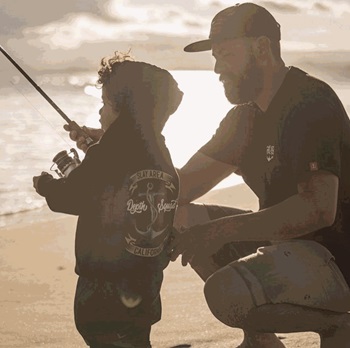 More fish, more sustainable fisheries, and an ecosystem better protected from threats was the promise of the Marine Life Protection Act (MLPA) and the 124 MPAs now in place in California. Ten years on, what have they accomplished? The recently completed 10-year review by the California Department of Fish and Wildlife, as well as numerous scientific papers, suggest that our hopes were misplaced. The review concludes “statewide and regional trends across habitats showed no difference in biodiversity inside compared to outside MPAs.” As to the very real threats to California’s coastal ecosystems, climate change and recent marine heat waves, the review is decidedly not sanguine “analysis across habitats in the central coast revealed that MPAs did not provide strong resilience against the marine heatwave.” Ouch! Finally, there is not even evidence that there are any more fish in California state waters now, except for some of the areas that are closed to fishing. more, >>CLICK TO READ<< 07:00
More fish, more sustainable fisheries, and an ecosystem better protected from threats was the promise of the Marine Life Protection Act (MLPA) and the 124 MPAs now in place in California. Ten years on, what have they accomplished? The recently completed 10-year review by the California Department of Fish and Wildlife, as well as numerous scientific papers, suggest that our hopes were misplaced. The review concludes “statewide and regional trends across habitats showed no difference in biodiversity inside compared to outside MPAs.” As to the very real threats to California’s coastal ecosystems, climate change and recent marine heat waves, the review is decidedly not sanguine “analysis across habitats in the central coast revealed that MPAs did not provide strong resilience against the marine heatwave.” Ouch! Finally, there is not even evidence that there are any more fish in California state waters now, except for some of the areas that are closed to fishing. more, >>CLICK TO READ<< 07:00
Commercial salmon fishermen eye Klamath dam removal with cautious hope
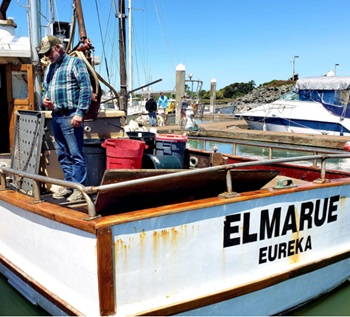 At 76, he still fishes for salmon alone. Standing in the cockpit on the stern deck of his wooden trawler, Elmarue, he can keep an eye on all six wires; when one of the lines starts to dance, he brings the fish in, stunning it with his gaff while it’s still in the water. Then he uses the tool to hook the salmon behind the gills and swings it onto the deck. “By the way, I want that fish cleaned and chilling in a single water flush within half an hour; that’s the standard,” says Dave Bitts. “I want you to enjoy eating it as much as I enjoyed catching it.”In April, for the second year in a row, the Pacific Fishery Management Council voted unanimously to close California’s commercial and recreational ocean salmon fishery. The closure was based on woefully low numbers of adult salmon expected to return to several California rivers. more, >>CLICK TO READ<< 12:58
At 76, he still fishes for salmon alone. Standing in the cockpit on the stern deck of his wooden trawler, Elmarue, he can keep an eye on all six wires; when one of the lines starts to dance, he brings the fish in, stunning it with his gaff while it’s still in the water. Then he uses the tool to hook the salmon behind the gills and swings it onto the deck. “By the way, I want that fish cleaned and chilling in a single water flush within half an hour; that’s the standard,” says Dave Bitts. “I want you to enjoy eating it as much as I enjoyed catching it.”In April, for the second year in a row, the Pacific Fishery Management Council voted unanimously to close California’s commercial and recreational ocean salmon fishery. The closure was based on woefully low numbers of adult salmon expected to return to several California rivers. more, >>CLICK TO READ<< 12:58
California’s ocean salmon fishing season closed for second year in a row
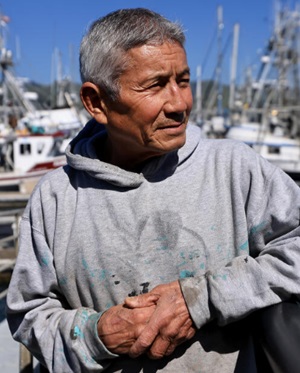 California’s commercial and recreational ocean salmon fishing season is set to be closed for the second consecutive year, another blow to the state’s beleaguered industry suffering from the combined fallout of drought, climate disruption and deteriorating ocean conditions. Already, a new request is underway for yet another federal disaster declaration to help alleviate some of the wide economic damage from the closure, affecting not just the fleet but many associated businesses that depend on the fishery, one of the state’s most lucrative. Many fishermen, already resigned to a severely limited season if any at all due to depleted stocks, had backed the full closure. “For nine months now, we’ll probably be without income. When you look at overall impact, it’s significant. Do we want the closure? Obviously, no. Is it necessary? Yes,” said Dick Ogg, a Bodega Bay commercial fisherman and president of the Bodega Bay Fishermen’s Marketing Association. Photos, more, >>click to read<< 07:43
California’s commercial and recreational ocean salmon fishing season is set to be closed for the second consecutive year, another blow to the state’s beleaguered industry suffering from the combined fallout of drought, climate disruption and deteriorating ocean conditions. Already, a new request is underway for yet another federal disaster declaration to help alleviate some of the wide economic damage from the closure, affecting not just the fleet but many associated businesses that depend on the fishery, one of the state’s most lucrative. Many fishermen, already resigned to a severely limited season if any at all due to depleted stocks, had backed the full closure. “For nine months now, we’ll probably be without income. When you look at overall impact, it’s significant. Do we want the closure? Obviously, no. Is it necessary? Yes,” said Dick Ogg, a Bodega Bay commercial fisherman and president of the Bodega Bay Fishermen’s Marketing Association. Photos, more, >>click to read<< 07:43
California’s commercial salmon fishermen face another disaster of a season amid proposed federal restrictions
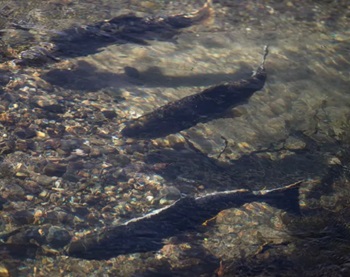 A regional fishery council is mulling three proposals for commercial salmon season, with one canceling the season entirely and the other two severely limiting how long the season would last and how many salmon could be taken. While two of the proposed options do offer limited commercial fishing opportunities, at least one local fisherman says the restrictions would significantly curb the viability of salmon fishing. “These really aren’t a viable option for anyone,” said Tim Obert, a Ben Lomond resident who’s been fishing salmon commercially for close to 20 years. Obert is president of the Santa Cruz Commercial Fishermen’s Association, sits on the state of California’s Dungeness Crab Task Force and is also a part of several working groups that advised the council in coming up with the alternative proposals. more, >>click to read<< 11:07
A regional fishery council is mulling three proposals for commercial salmon season, with one canceling the season entirely and the other two severely limiting how long the season would last and how many salmon could be taken. While two of the proposed options do offer limited commercial fishing opportunities, at least one local fisherman says the restrictions would significantly curb the viability of salmon fishing. “These really aren’t a viable option for anyone,” said Tim Obert, a Ben Lomond resident who’s been fishing salmon commercially for close to 20 years. Obert is president of the Santa Cruz Commercial Fishermen’s Association, sits on the state of California’s Dungeness Crab Task Force and is also a part of several working groups that advised the council in coming up with the alternative proposals. more, >>click to read<< 11:07
Hundreds of thousands of salmon released in Northern California river die in ‘large mortality’ event
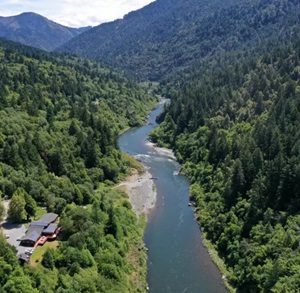 As many as hundreds of thousands of fall-run Chinook salmon died early last week due to suspected gas bubble disease. The fish were released into the 257-mile-long Klamath River near the California-Oregon border following November’s historic dam removal at the site, which was intended to help the stream flow freely again and bolster the habitat for the protected species. Still, the CDFW said those conditions, while unfortunate, were anticipated, and that its hatchery has over three million more salmon it plans to release later this month, downstream from the dam and tunnel. Juvenile fish like salmon fry can have high mortality rates due to predators, lack of food or disease, and the CDFW’s planned release will include fish in later stages of the species’ life cycle, specifically smolts and yearlings. more, >>click to read<< 09:28
As many as hundreds of thousands of fall-run Chinook salmon died early last week due to suspected gas bubble disease. The fish were released into the 257-mile-long Klamath River near the California-Oregon border following November’s historic dam removal at the site, which was intended to help the stream flow freely again and bolster the habitat for the protected species. Still, the CDFW said those conditions, while unfortunate, were anticipated, and that its hatchery has over three million more salmon it plans to release later this month, downstream from the dam and tunnel. Juvenile fish like salmon fry can have high mortality rates due to predators, lack of food or disease, and the CDFW’s planned release will include fish in later stages of the species’ life cycle, specifically smolts and yearlings. more, >>click to read<< 09:28
Bacher: CDFW salmon info webinar to discuss 2023 returns, 2024 ocean abundance estimates
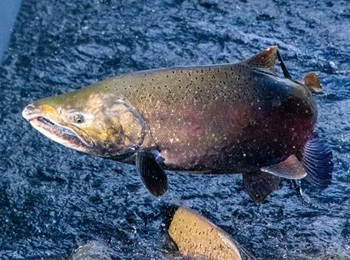 Will there be salmon seasons this year on the ocean waters off the California Coast and on the Sacramento and Klamath rivers? We will get an idea of the potential for recreational and commercial salmon seasons this year when the California Department of Fish and Wildlife (CDFW) holds its annual Salmon Information Meeting via webinar at 10 a.m. March 1. The meeting will provide informational presentations on topics including last year’s spawning escapement, estimates of forecasted ocean abundance and management goals for 2024 ocean salmon season. Last year all ocean recreational and commercial fishing and river recreational fishing for salmon was closed in California. more, >>click to read<< 07:58
Will there be salmon seasons this year on the ocean waters off the California Coast and on the Sacramento and Klamath rivers? We will get an idea of the potential for recreational and commercial salmon seasons this year when the California Department of Fish and Wildlife (CDFW) holds its annual Salmon Information Meeting via webinar at 10 a.m. March 1. The meeting will provide informational presentations on topics including last year’s spawning escapement, estimates of forecasted ocean abundance and management goals for 2024 ocean salmon season. Last year all ocean recreational and commercial fishing and river recreational fishing for salmon was closed in California. more, >>click to read<< 07:58
Crab gear reduction for commercial fishers extended through mid-March
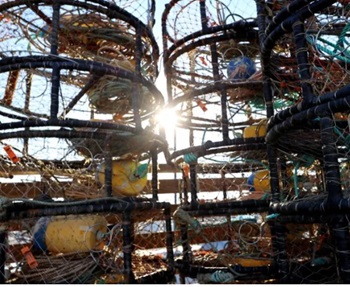 Less than a month after the commercial Dungeness crab season opened in the Monterey Bay region, the California Department of Fish and Wildlife (CDFW) has extended the gear reduction in all fishing zones south of the Mendocino/Sonoma County line. “It’s about the minimum we can survive on viably,” fisher Tim Obert told Lookout in January. Obert is a Santa Cruz native who has fished commercially for more than two decades. He serves as president of the Santa Cruz Commercial Fishermen’s Association and sits on the state’s Dungeness Crab Task Force. more, >>click to read<< 10:42
Less than a month after the commercial Dungeness crab season opened in the Monterey Bay region, the California Department of Fish and Wildlife (CDFW) has extended the gear reduction in all fishing zones south of the Mendocino/Sonoma County line. “It’s about the minimum we can survive on viably,” fisher Tim Obert told Lookout in January. Obert is a Santa Cruz native who has fished commercially for more than two decades. He serves as president of the Santa Cruz Commercial Fishermen’s Association and sits on the state’s Dungeness Crab Task Force. more, >>click to read<< 10:42
Dungeness crab: The West Coast’s forever fishery
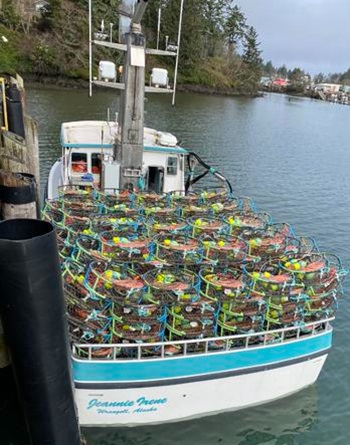 Fourth-generation fisherman Kelsey Cutting has photos of boats prominently displayed in his Long Beach, Wash., dining room. On one side is his grandfather’s old trawler, the Lulu 2, a 35-foot wooden double ender. “The other side I have a picture of my boat, the Jeannie Irene, which is a 50-foot fiberglass boat, and it’s 10 years old. It’s a big difference,” Cutting said. The fishing fleet on the West Coast has gotten bigger and more modern, and the portion of boats that can operate in relatively poor weather has increased, he said. The job remains dangerous, though, and storms can be unforgiving. But there can be a handsome payoff at the docks, especially for Dungeness crab. The West Coast’s top fishery surpassed $200 million in value in Washington, Oregon and California in 2022-23. Photos, more, >>click to read<< 15:46
Fourth-generation fisherman Kelsey Cutting has photos of boats prominently displayed in his Long Beach, Wash., dining room. On one side is his grandfather’s old trawler, the Lulu 2, a 35-foot wooden double ender. “The other side I have a picture of my boat, the Jeannie Irene, which is a 50-foot fiberglass boat, and it’s 10 years old. It’s a big difference,” Cutting said. The fishing fleet on the West Coast has gotten bigger and more modern, and the portion of boats that can operate in relatively poor weather has increased, he said. The job remains dangerous, though, and storms can be unforgiving. But there can be a handsome payoff at the docks, especially for Dungeness crab. The West Coast’s top fishery surpassed $200 million in value in Washington, Oregon and California in 2022-23. Photos, more, >>click to read<< 15:46
Frustrated fishermen get good news: good rockfishing, salmon fishing to return in 2024
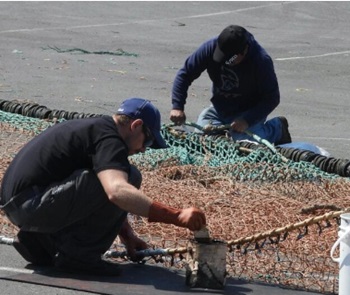 With an oversized head, bulbous eyes and narrow body, the quillback rockfish looks like a golden bullfrog armed with a quiver full of arrows on its back. Few sport fishermen want to keep, much less eat, the famously sharp and ouchy and skinny quillback, which are reeled by those seeking meatier rockfish. But it was the quillback, which is often tossed back into the sea, whose population plummet caused a shutdown that impacted the entire rockfish industry, both for commercial and for party boats operating out of Mendocino Coast’s Noyo Harbor. That mysterious plunge in quillback numbers cut off all near-shore rockfish fishing last year, causing an organized outcry by fishermen and a new plan for 2024. Photos, more, >>click to read<< 07:15
With an oversized head, bulbous eyes and narrow body, the quillback rockfish looks like a golden bullfrog armed with a quiver full of arrows on its back. Few sport fishermen want to keep, much less eat, the famously sharp and ouchy and skinny quillback, which are reeled by those seeking meatier rockfish. But it was the quillback, which is often tossed back into the sea, whose population plummet caused a shutdown that impacted the entire rockfish industry, both for commercial and for party boats operating out of Mendocino Coast’s Noyo Harbor. That mysterious plunge in quillback numbers cut off all near-shore rockfish fishing last year, causing an organized outcry by fishermen and a new plan for 2024. Photos, more, >>click to read<< 07:15
Fishermen are gearing up for the Dungeness crab season to start next week
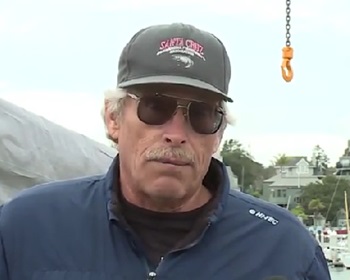 After months of delays, local fishermen will finally be allowed to fish for Dungeness crab off of the Central Coast. The California Department of Fish and Wildlife announced the season will reopen on Jan. 18; however, fleets will only be allowed to use 50 percent of their traps. Meanwhile, those in the industry say the delays and restrictions are frustrating. “The last five years, we’ve been losing all our holiday markets. That means we have to go out in rougher weather,” said Chris Zajac, a Santa Cruz Dungeness crab fisherman. “We only get a month and a half to fish, whereas we used to get eight months to fish for crab,” Zajac said. Video, >>click to read<< 11:24
After months of delays, local fishermen will finally be allowed to fish for Dungeness crab off of the Central Coast. The California Department of Fish and Wildlife announced the season will reopen on Jan. 18; however, fleets will only be allowed to use 50 percent of their traps. Meanwhile, those in the industry say the delays and restrictions are frustrating. “The last five years, we’ve been losing all our holiday markets. That means we have to go out in rougher weather,” said Chris Zajac, a Santa Cruz Dungeness crab fisherman. “We only get a month and a half to fish, whereas we used to get eight months to fish for crab,” Zajac said. Video, >>click to read<< 11:24
Dungeness Crab season begins January 5
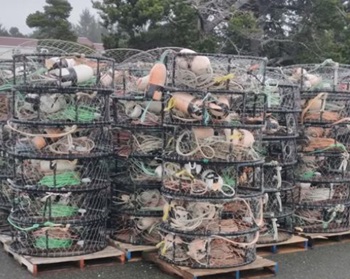 The commercial Dungeness crab season commences in Del Norte County, this week. The California Department of Fish and Wildlife (DFWD) announced the Dungeness season is now open in zones 1 and 2, Sonoma County line to the Oregon border. The delay in zones 3-6, South of the Sonoma / Mendocino will continue to be restricted. Multiple delays in opening the Crab season have been attributed to excessive humpback whale entanglements and the high number of whale sightings, according to the DFWD Assessment and Mitigation program. more, >>click to read<< 17:25
The commercial Dungeness crab season commences in Del Norte County, this week. The California Department of Fish and Wildlife (DFWD) announced the Dungeness season is now open in zones 1 and 2, Sonoma County line to the Oregon border. The delay in zones 3-6, South of the Sonoma / Mendocino will continue to be restricted. Multiple delays in opening the Crab season have been attributed to excessive humpback whale entanglements and the high number of whale sightings, according to the DFWD Assessment and Mitigation program. more, >>click to read<< 17:25
CDFW Opens Commercial Dungeness Crab Fishery in Northern Management Zone, Continues Commercial Fishery Delay in Central Management Area.
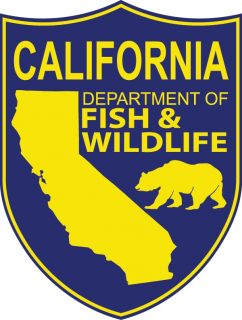 The California Department of Fish and Wildlife (CDFW) will open the commercial Dungeness crab fishery from the Oregon state line to the Sonoma/Mendocino county line (Fishing Zones 1 and 2) under a Fleet Advisory beginning Jan. 5, 2024 at 12:01 a.m. with a 64-hour pre-soak to begin on Jan. 2, 2024 at 8:01 a.m. The commercial fishery will remain delayed from the Sonoma/Mendocino county line to the U.S./Mexico border (Fishing Zones 3, 4, 5 and 6) until at least the next risk assessment due to elevated numbers of humpback whales resulting in increased entanglement risk. CDFW is also continuing the temporary recreational crab trap restriction from the Sonoma/Mendocino county line to Lopez Point, Monterey County, more, >>click to read<< 17:29
The California Department of Fish and Wildlife (CDFW) will open the commercial Dungeness crab fishery from the Oregon state line to the Sonoma/Mendocino county line (Fishing Zones 1 and 2) under a Fleet Advisory beginning Jan. 5, 2024 at 12:01 a.m. with a 64-hour pre-soak to begin on Jan. 2, 2024 at 8:01 a.m. The commercial fishery will remain delayed from the Sonoma/Mendocino county line to the U.S./Mexico border (Fishing Zones 3, 4, 5 and 6) until at least the next risk assessment due to elevated numbers of humpback whales resulting in increased entanglement risk. CDFW is also continuing the temporary recreational crab trap restriction from the Sonoma/Mendocino county line to Lopez Point, Monterey County, more, >>click to read<< 17:29
Commercial crabbing start pushed into 2024
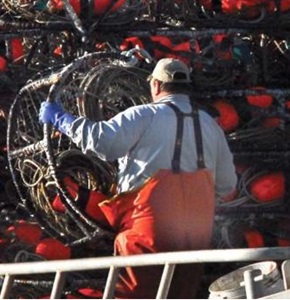 Dungeness crab in the vicinity of the mouth of the Columbia are still only inching their way toward the proportion of meat required before commercial harvest is allowed, delaying the season again. Fishery managers decided on Dec. 18 to push out the season start to Dec. 31, Jan. 15 or Feb. 1. They will meet Dec. 20 to settle on which date crabbers will be allowed to drop their pots, with deliveries back to port typically occurring around 72 hours later. Samples gathered Dec. 17 found south Pacific County crab had 20.7% recoverable meat, up from 19.4% meat on Nov. 28. Clatsop County crab tested at 22.9%, just shy of the mandatory minimum meat recovery criteria of 23% north of Cascade Head, and up from 21.1% on Nov. 29. more, >>click to read<< 14:30
Dungeness crab in the vicinity of the mouth of the Columbia are still only inching their way toward the proportion of meat required before commercial harvest is allowed, delaying the season again. Fishery managers decided on Dec. 18 to push out the season start to Dec. 31, Jan. 15 or Feb. 1. They will meet Dec. 20 to settle on which date crabbers will be allowed to drop their pots, with deliveries back to port typically occurring around 72 hours later. Samples gathered Dec. 17 found south Pacific County crab had 20.7% recoverable meat, up from 19.4% meat on Nov. 28. Clatsop County crab tested at 22.9%, just shy of the mandatory minimum meat recovery criteria of 23% north of Cascade Head, and up from 21.1% on Nov. 29. more, >>click to read<< 14:30
Dungeness Crab Season Delayed Again, SF Crabbers Miss Holiday Haul
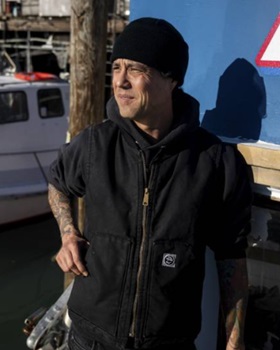 For decades, fishers have earned a living selling Dungeness crab out of San Francisco’s Fisherman’s Wharf. But many, like Shawn Chen Flading, have struggled over the last five years as the state has consecutively delayed the commercial season. “Every delay is difficult. Right now, I have zero income as a fisherman,” Flading said. The season, which has historically started on Nov. 15, is delayed until at least New Year’s Day to protect migrating humpback whales. Crabbers like Flading hope to catch the tail end of the holidays to recoup what they’ve lost. “It’s something people like to splurge on to create a feast,” Flading said. “But with the delay, we’ve lost all the holiday markets.” Photos, more, >>click to read<< 13:37
For decades, fishers have earned a living selling Dungeness crab out of San Francisco’s Fisherman’s Wharf. But many, like Shawn Chen Flading, have struggled over the last five years as the state has consecutively delayed the commercial season. “Every delay is difficult. Right now, I have zero income as a fisherman,” Flading said. The season, which has historically started on Nov. 15, is delayed until at least New Year’s Day to protect migrating humpback whales. Crabbers like Flading hope to catch the tail end of the holidays to recoup what they’ve lost. “It’s something people like to splurge on to create a feast,” Flading said. “But with the delay, we’ve lost all the holiday markets.” Photos, more, >>click to read<< 13:37
California’s Central Valley Chinook Are Getting Lost on Their Way Home
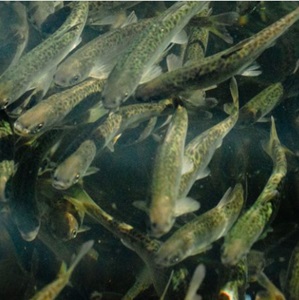 Picture yourself: a chinook salmon in the prime of your life. You dart through the water off California’s central coast, winding through kelp and dodging hungry sea lions. Long, sleek and silver, dappled with dark spots. Eyes wide and vigilant. More than 20 kilograms of pure muscle. You’ve been out at sea for several years now, first voyaging north along the Oregon coastline, then westward into deeper water. As winter approaches and the days grow shorter, you’ve found your way back to California. You’ve felt the seasons turn before, but this year, it means something special. Your kind, the Central Valley chinook—what fishers call the king salmon—are not born at sea. For thousands of years, your ancestors began their lives in the heart of California, where tributaries and streams flow together to form the mighty Sacramento and San Joaquin Rivers. photos, >>click to read<< 08:31
Picture yourself: a chinook salmon in the prime of your life. You dart through the water off California’s central coast, winding through kelp and dodging hungry sea lions. Long, sleek and silver, dappled with dark spots. Eyes wide and vigilant. More than 20 kilograms of pure muscle. You’ve been out at sea for several years now, first voyaging north along the Oregon coastline, then westward into deeper water. As winter approaches and the days grow shorter, you’ve found your way back to California. You’ve felt the seasons turn before, but this year, it means something special. Your kind, the Central Valley chinook—what fishers call the king salmon—are not born at sea. For thousands of years, your ancestors began their lives in the heart of California, where tributaries and streams flow together to form the mighty Sacramento and San Joaquin Rivers. photos, >>click to read<< 08:31
California Dungeness crab season on hold again, fishermen losing out big
Dungeness crab season is on hold again. There are a lot fewer fishing boats at Pillar Point Harbor in Half Moon Bay these days. A high number of migrating humpback whales and a recently confirmed leatherback sea turtle, the largest turtle in the world, being caught in Dungeness crab fishing gear, according to the California Department of Fish and Wildlife, has caused the state to prevent crab traps from being used once again. “Absolutely criminal ’cause they’re not solving the problem by keeping us tied to the dock,” Matthew Paul, who has been crabbing along the California coast for four decades.”That’s about six bucks to the public,” Rick Hauschel explained the price of a crab held in his hands, after lifting one out of a tank on his boat, the Polaris. Video, photos, >>click to read<< 06:59






